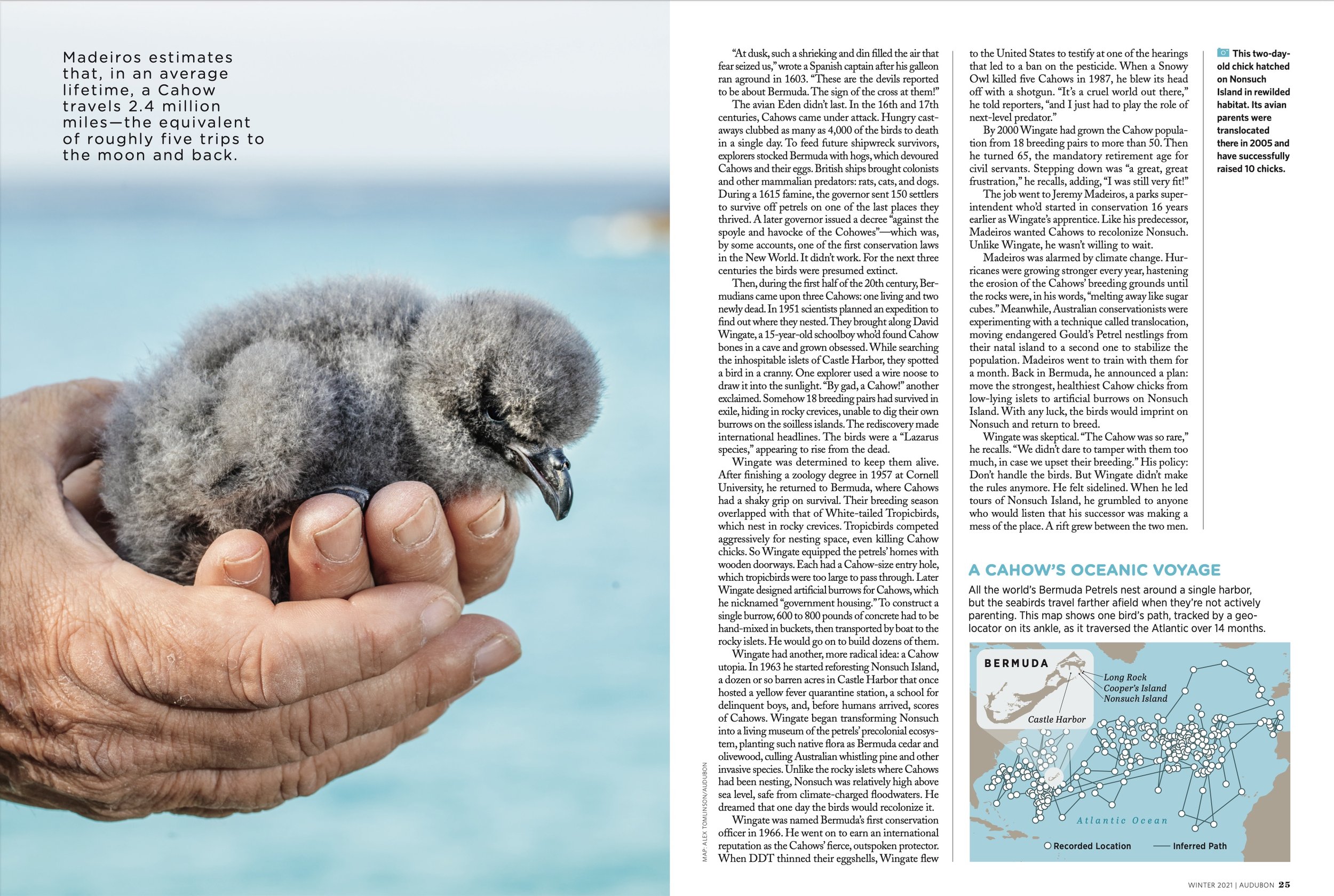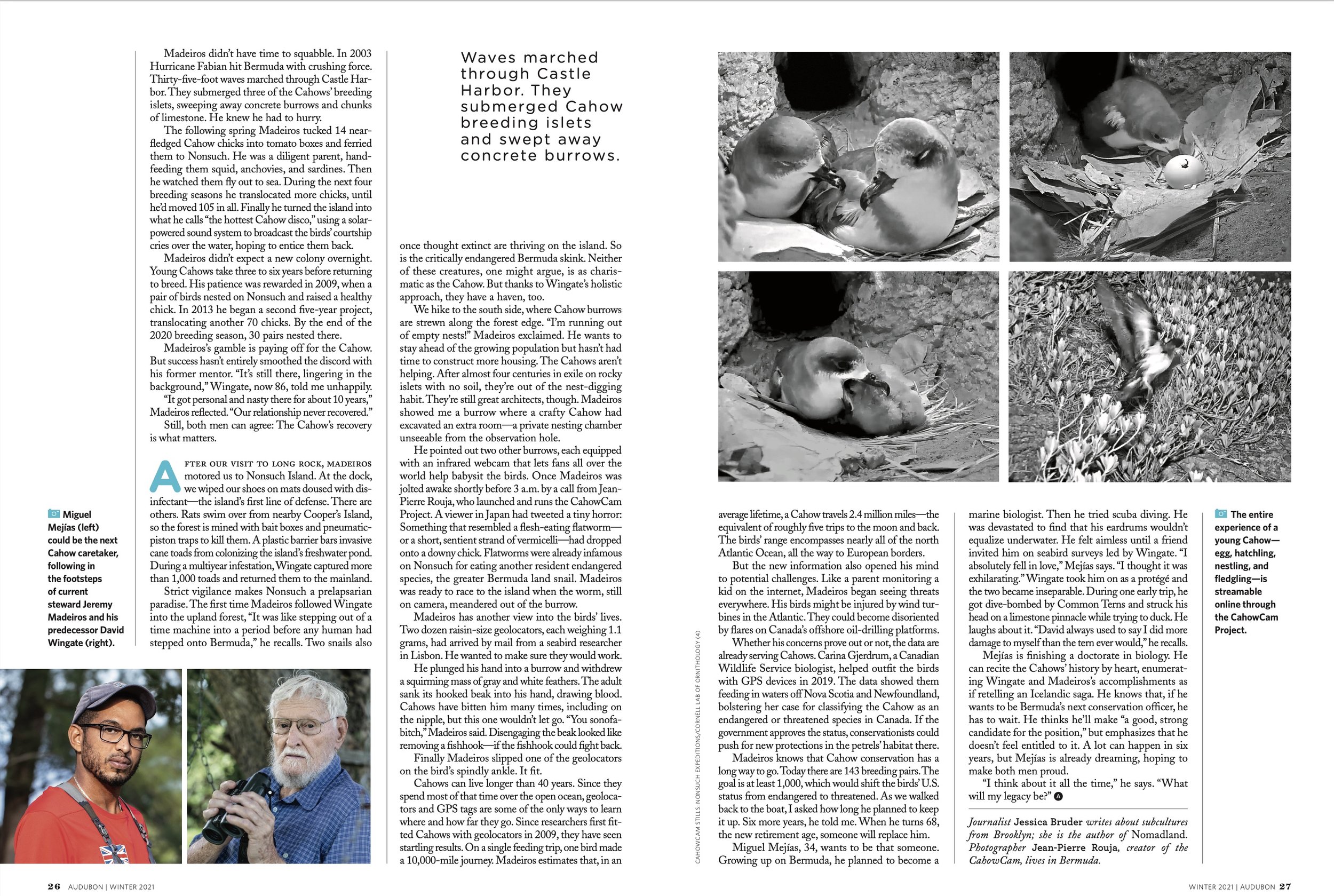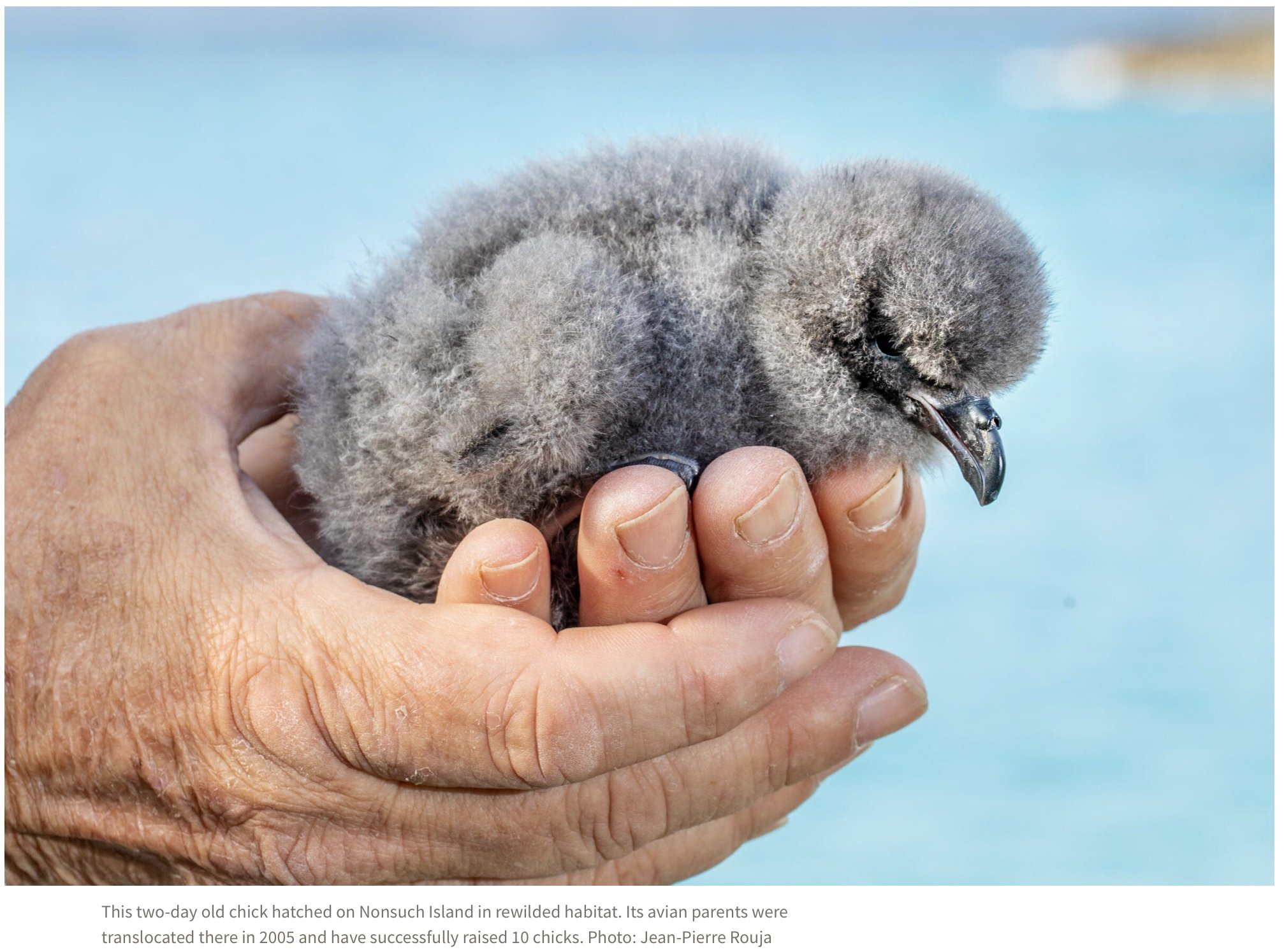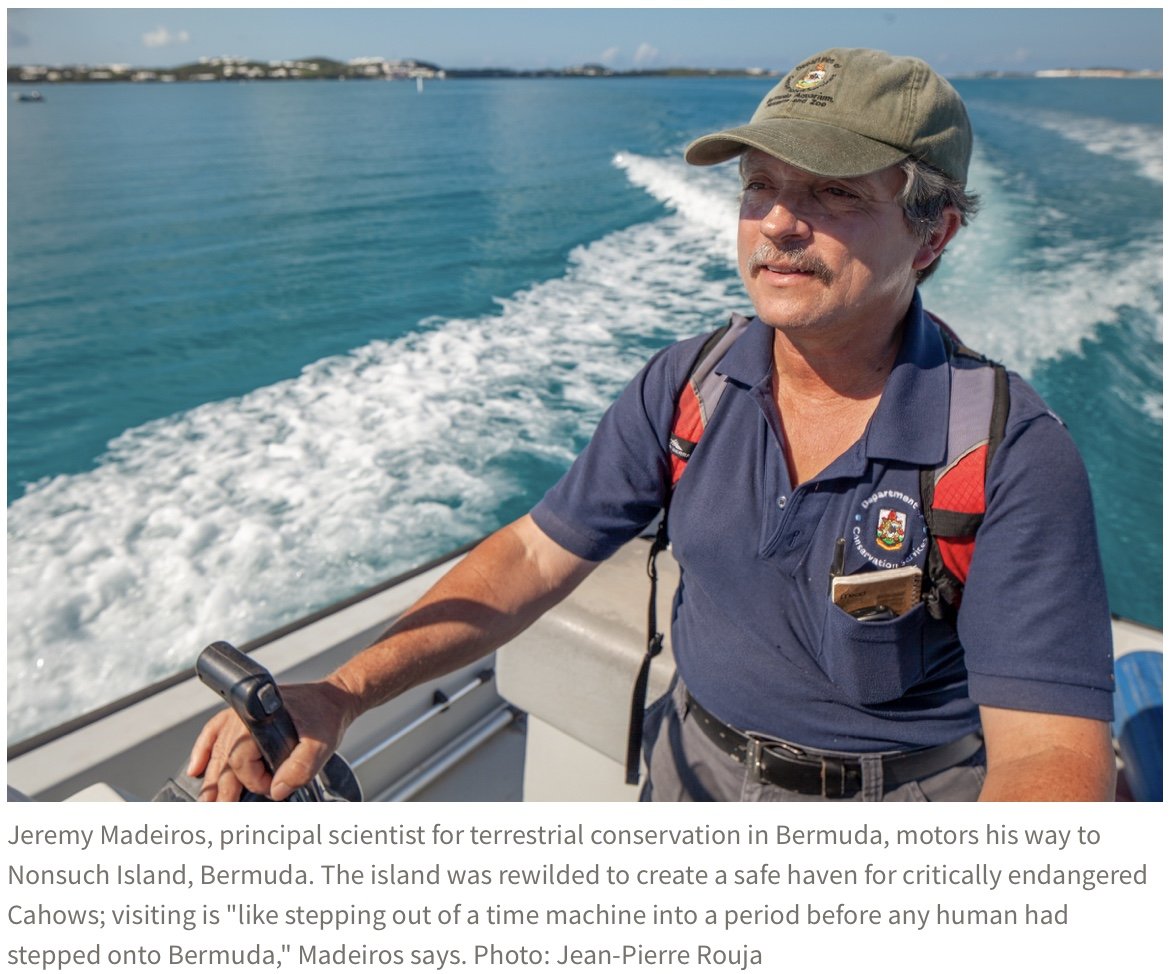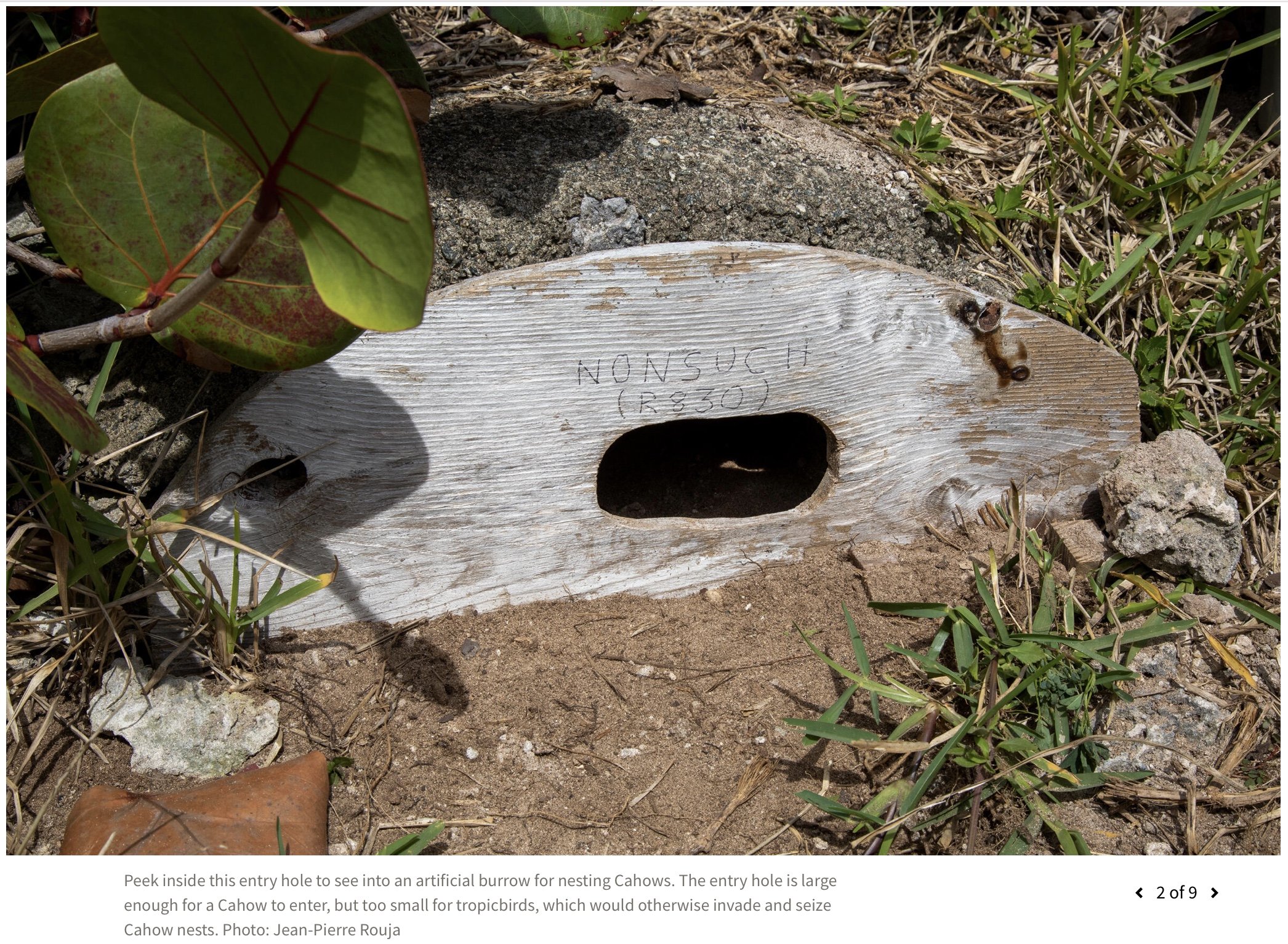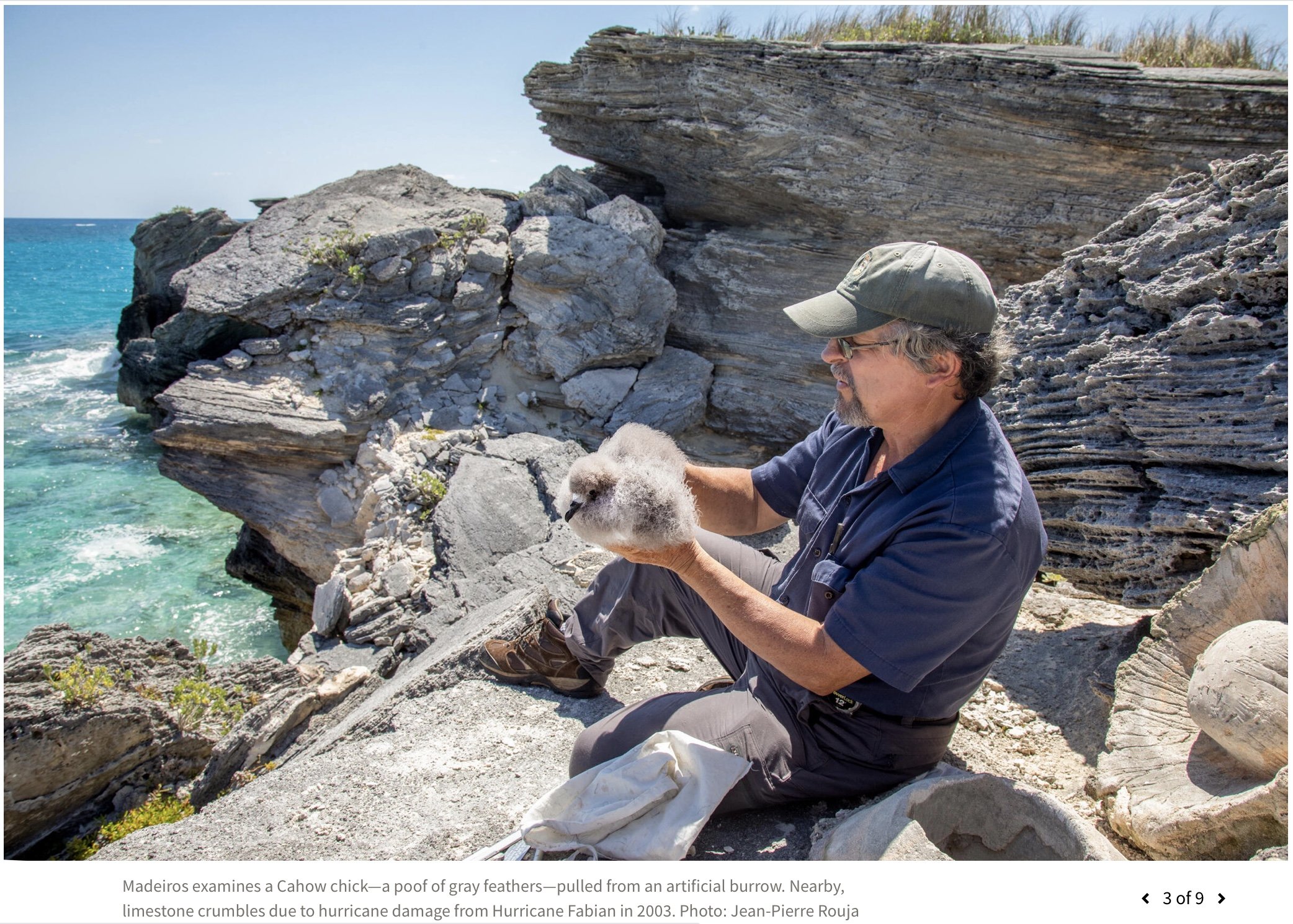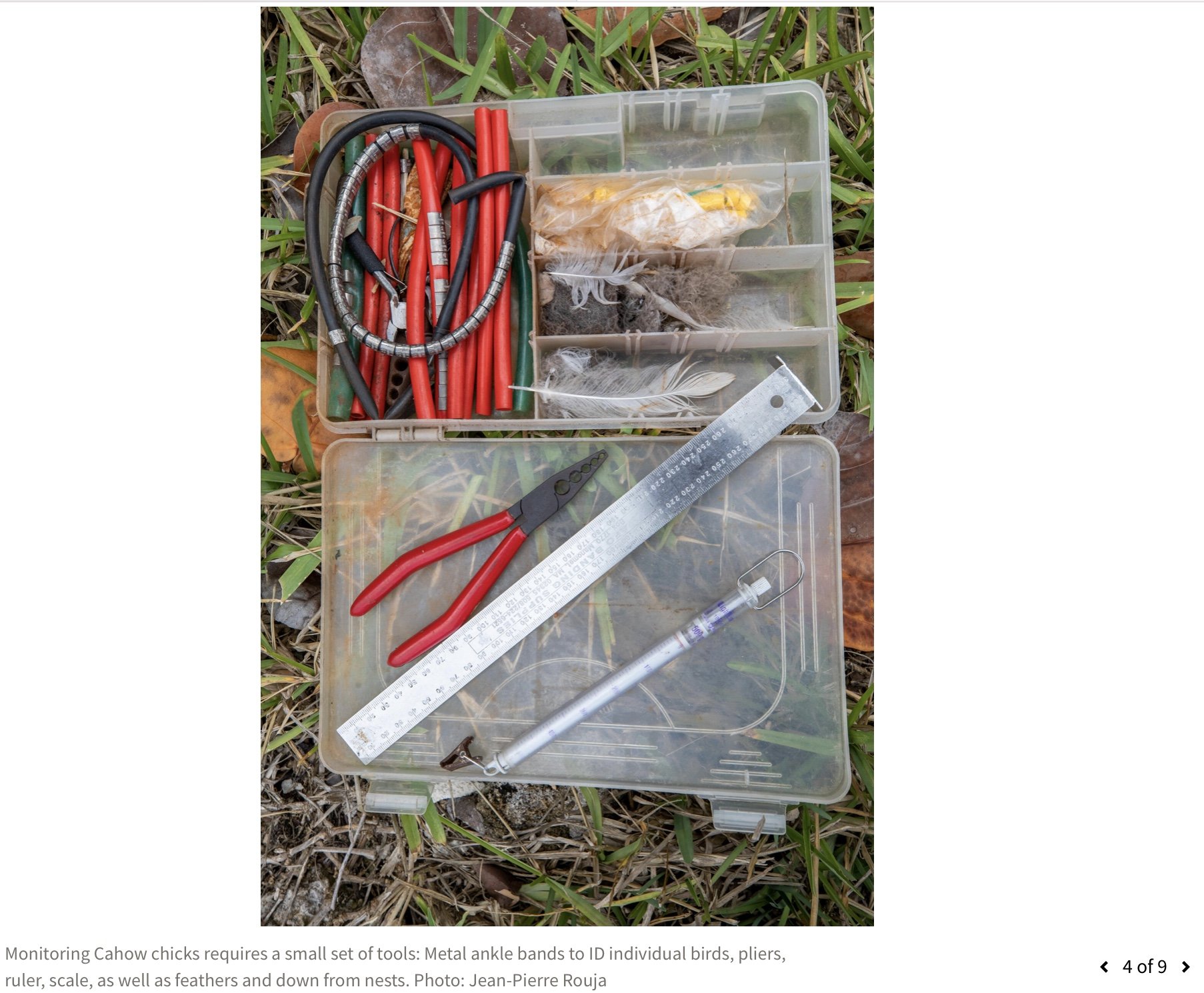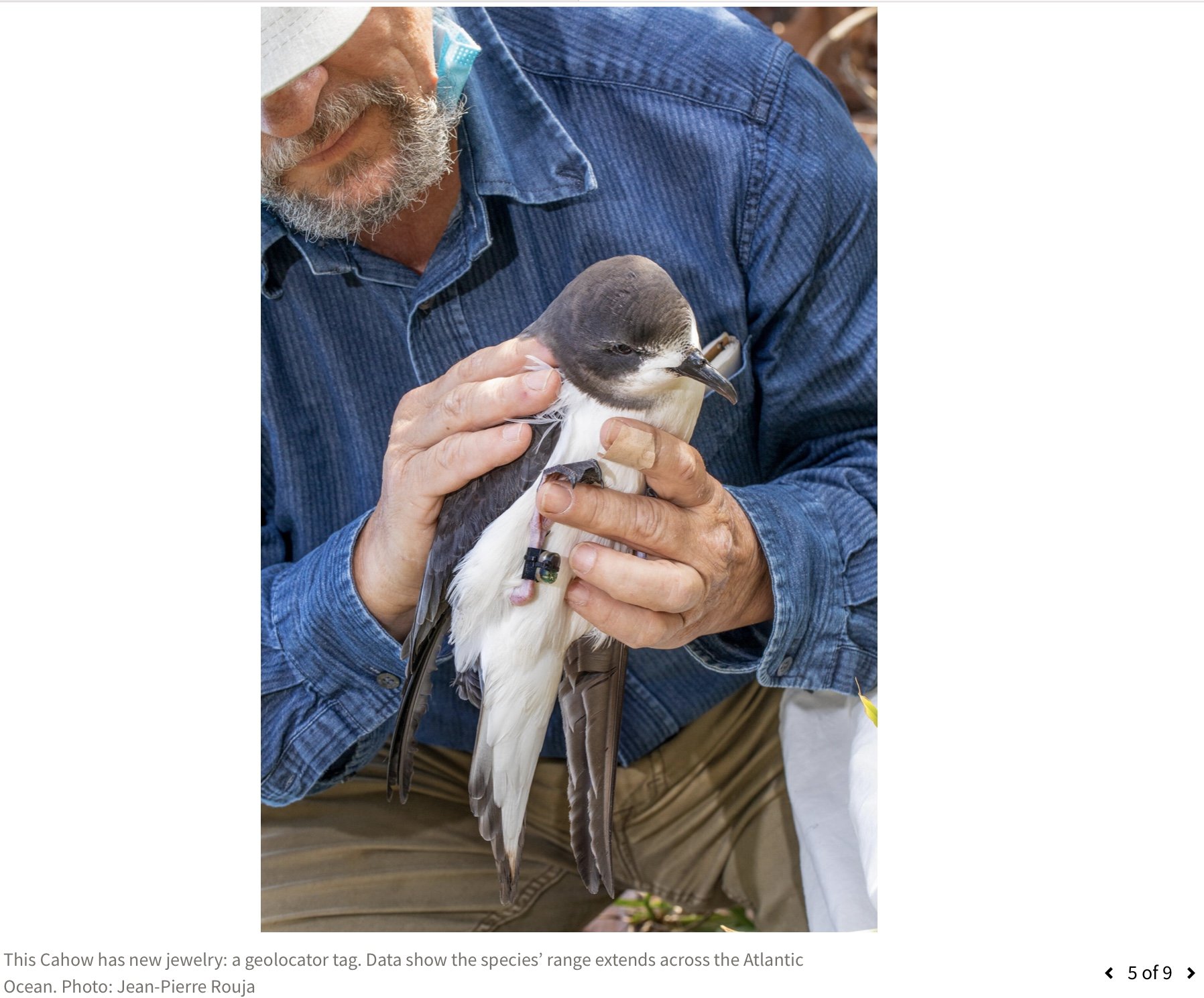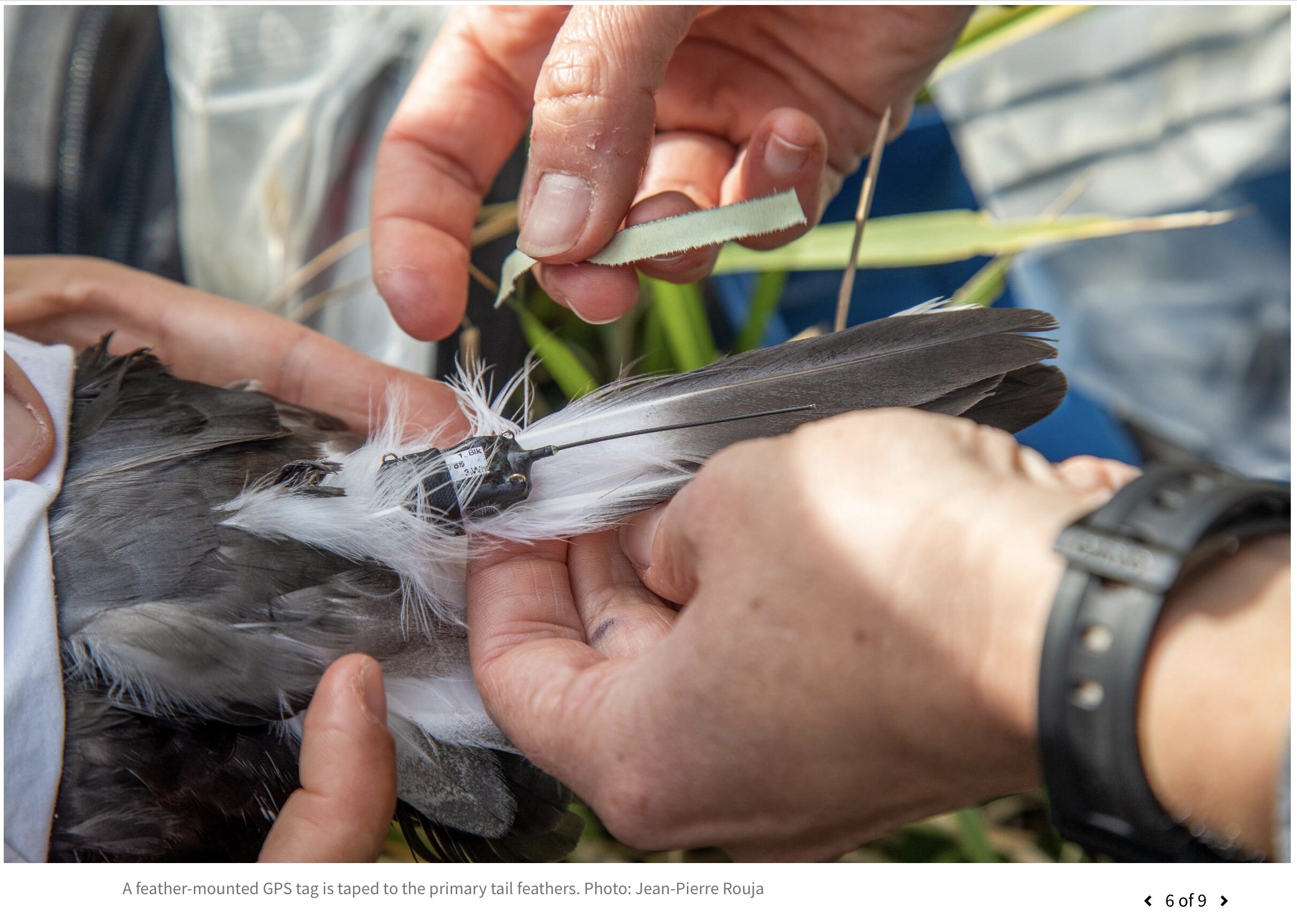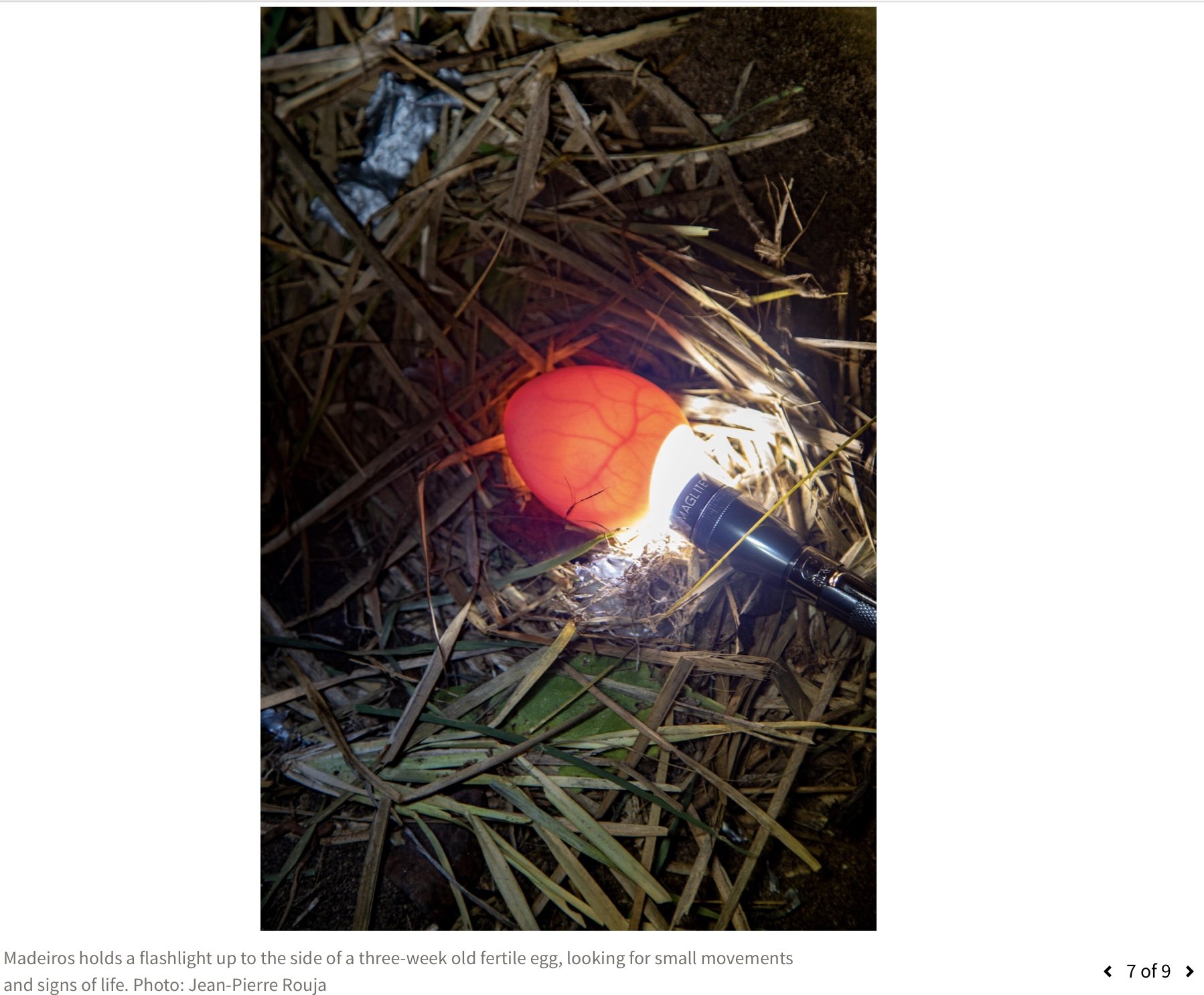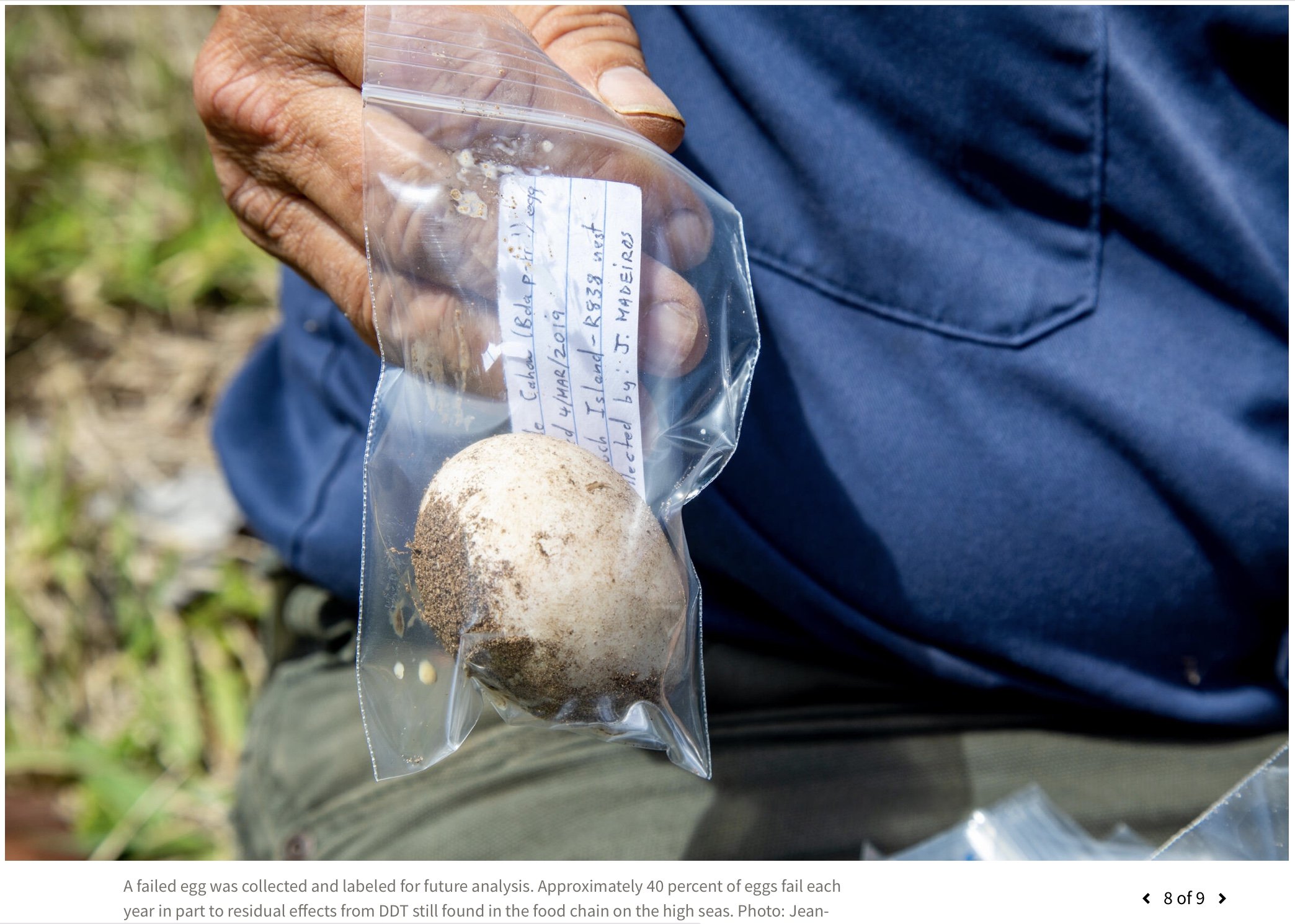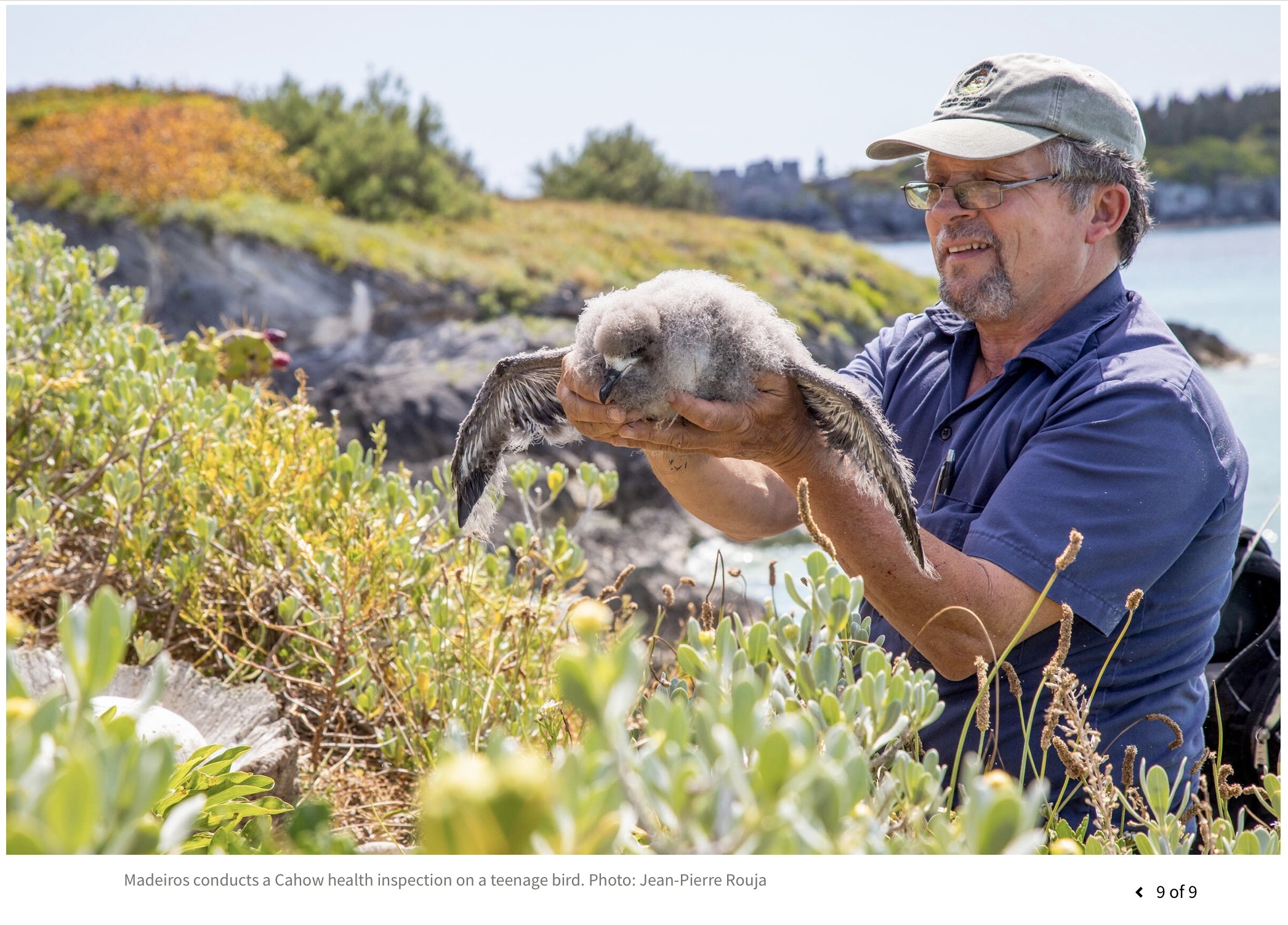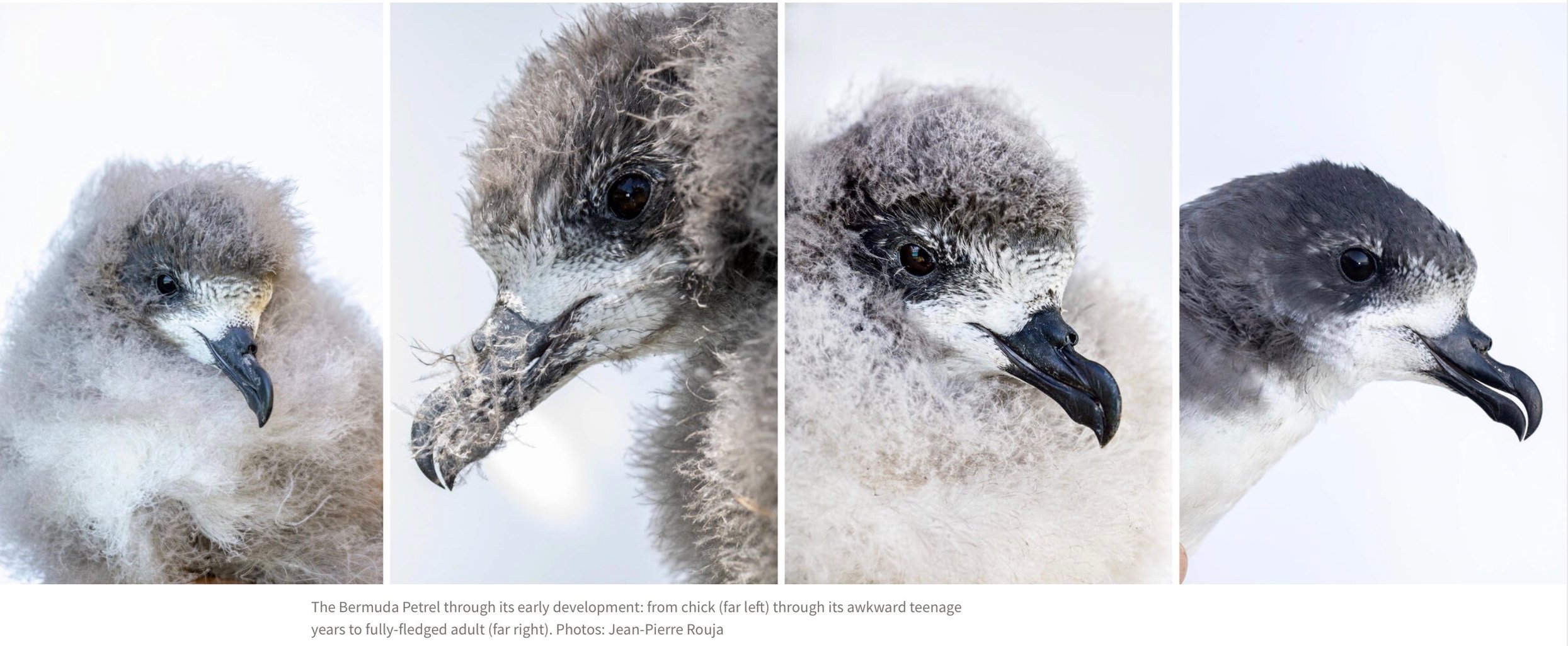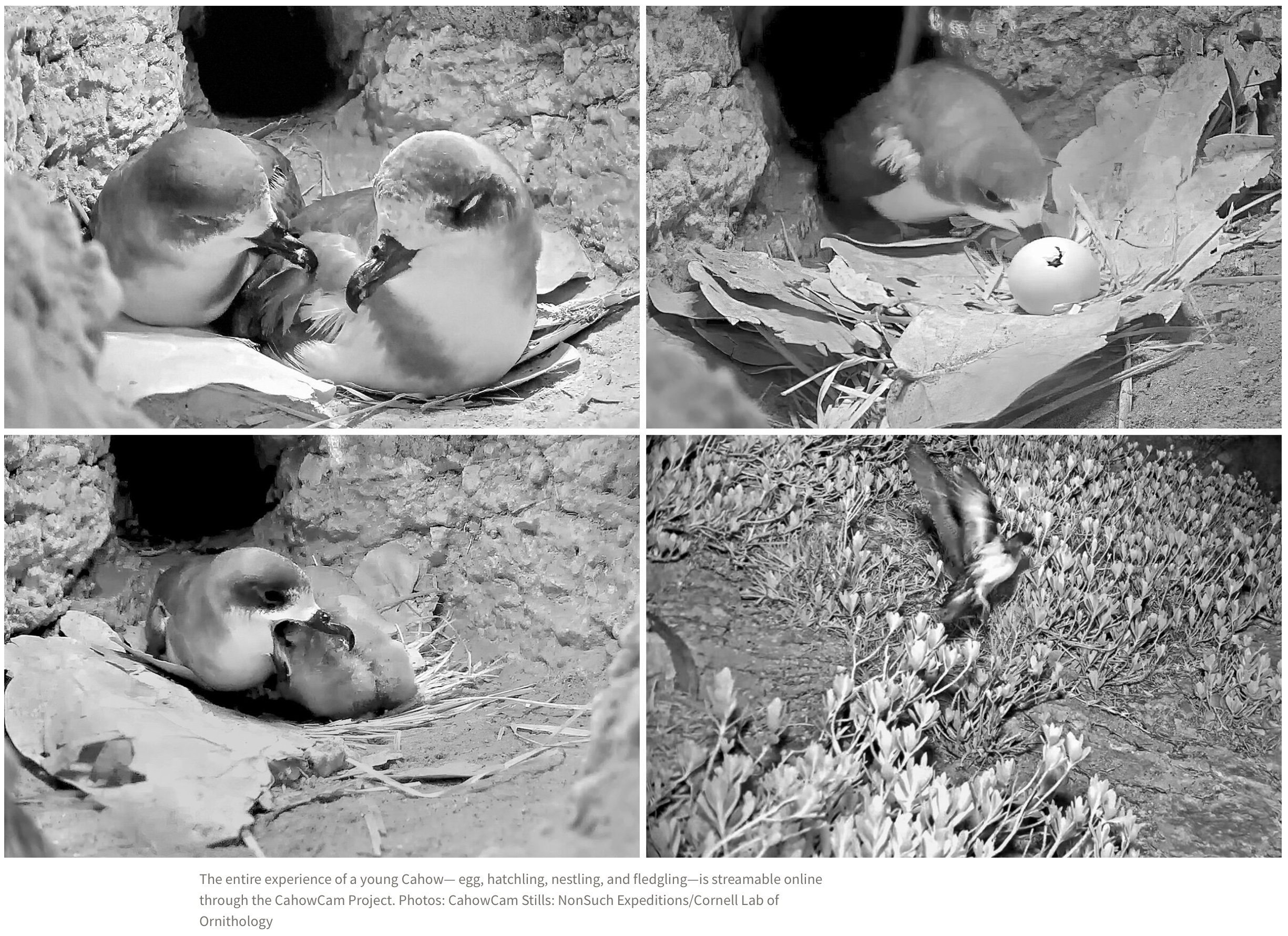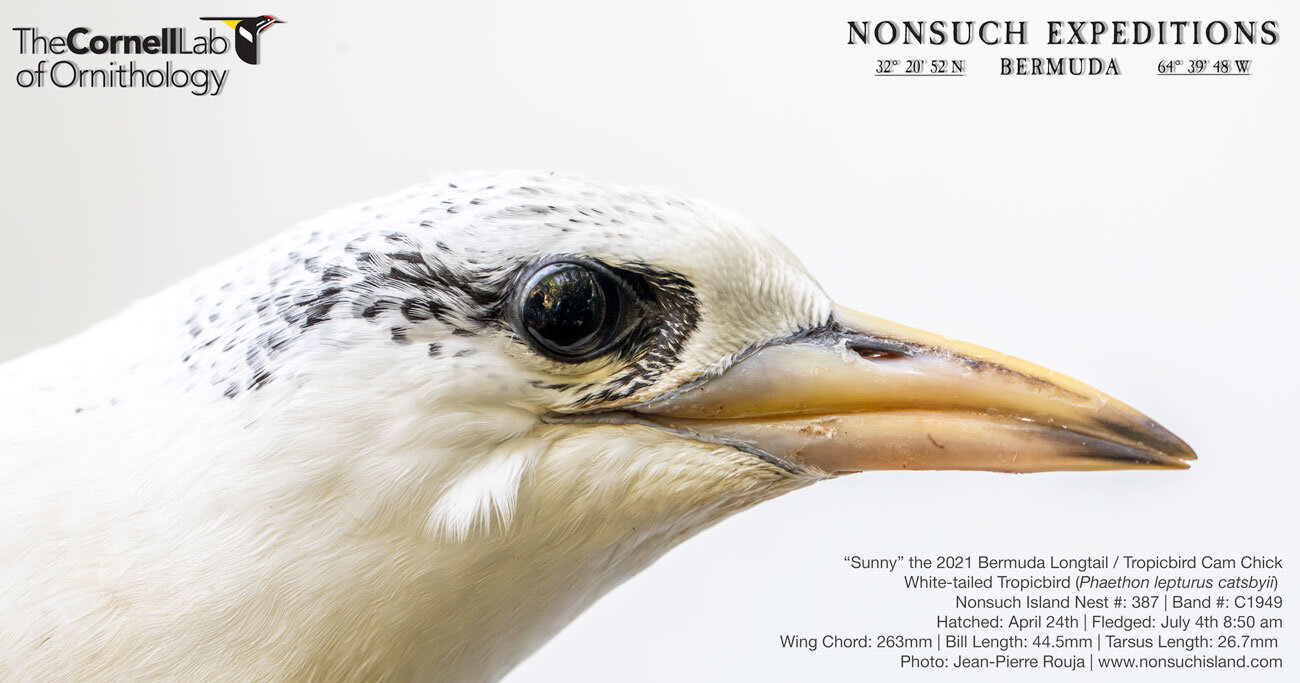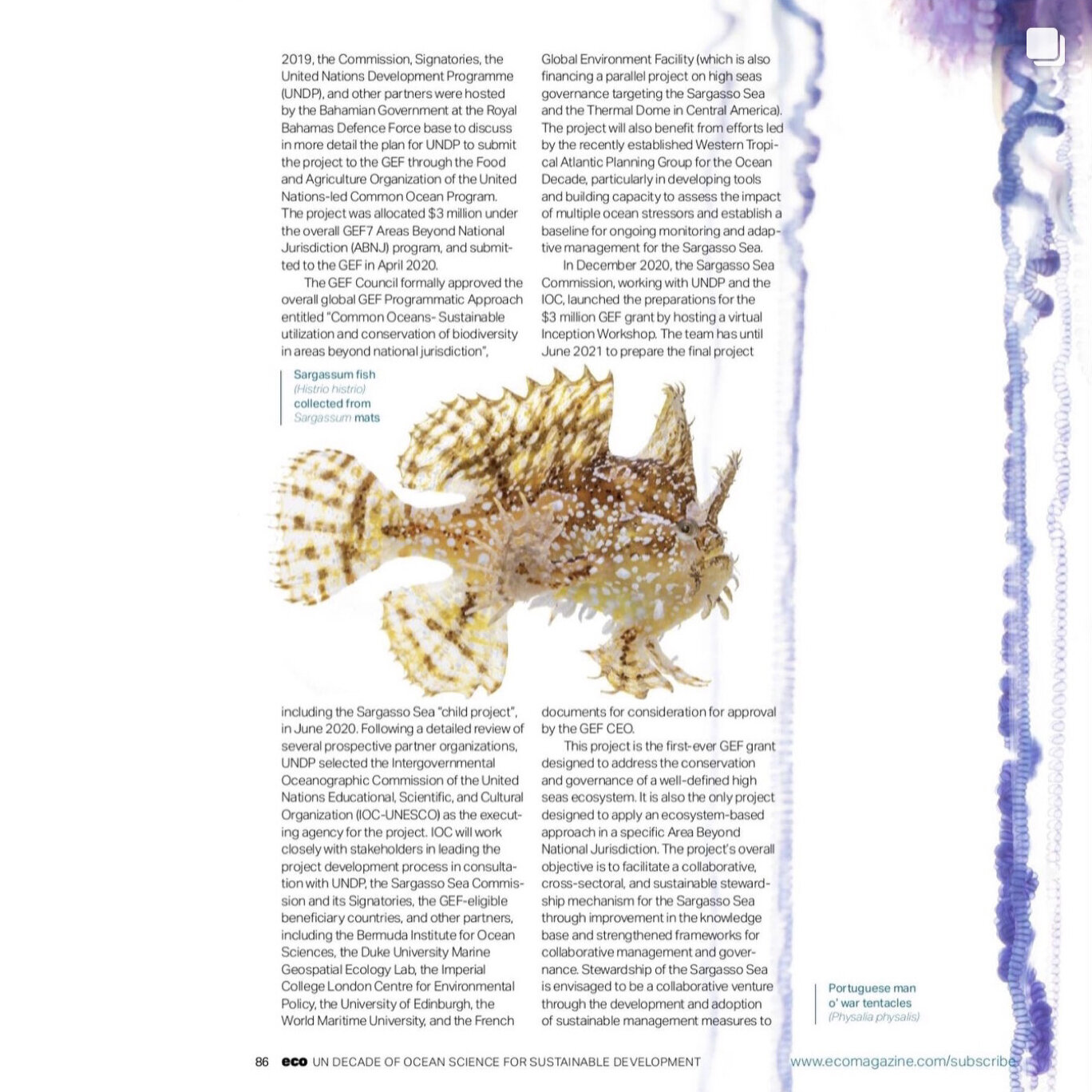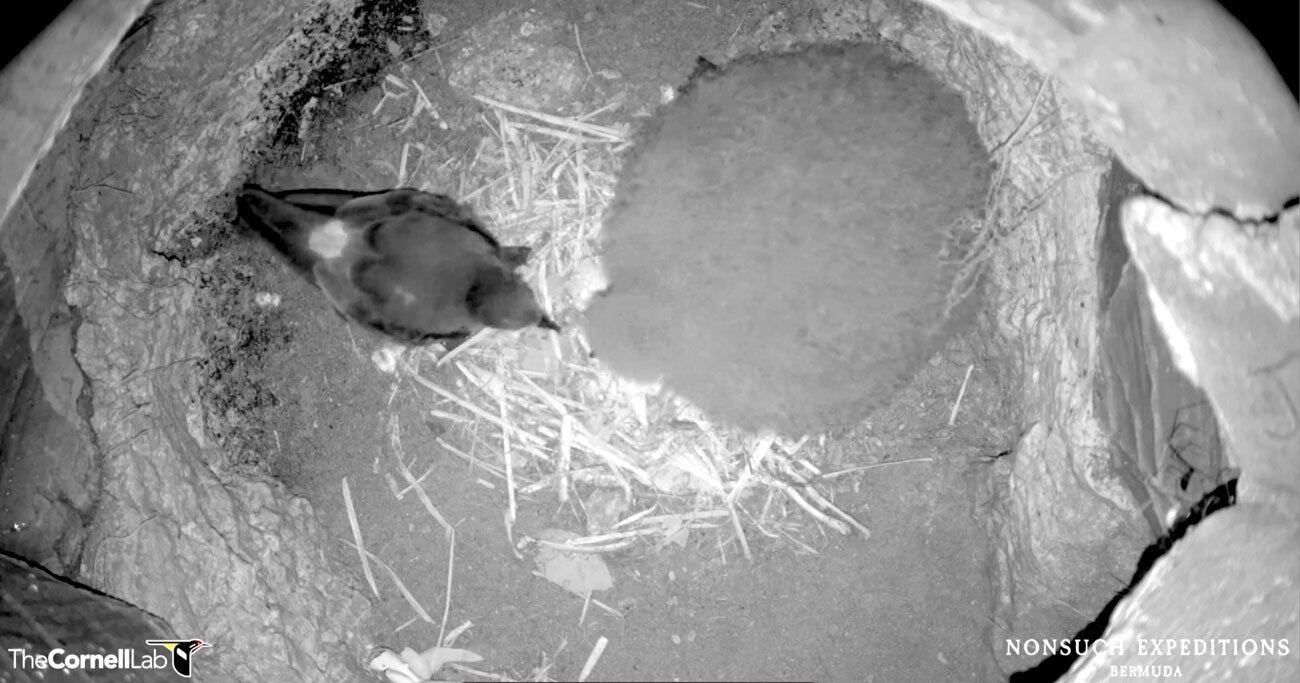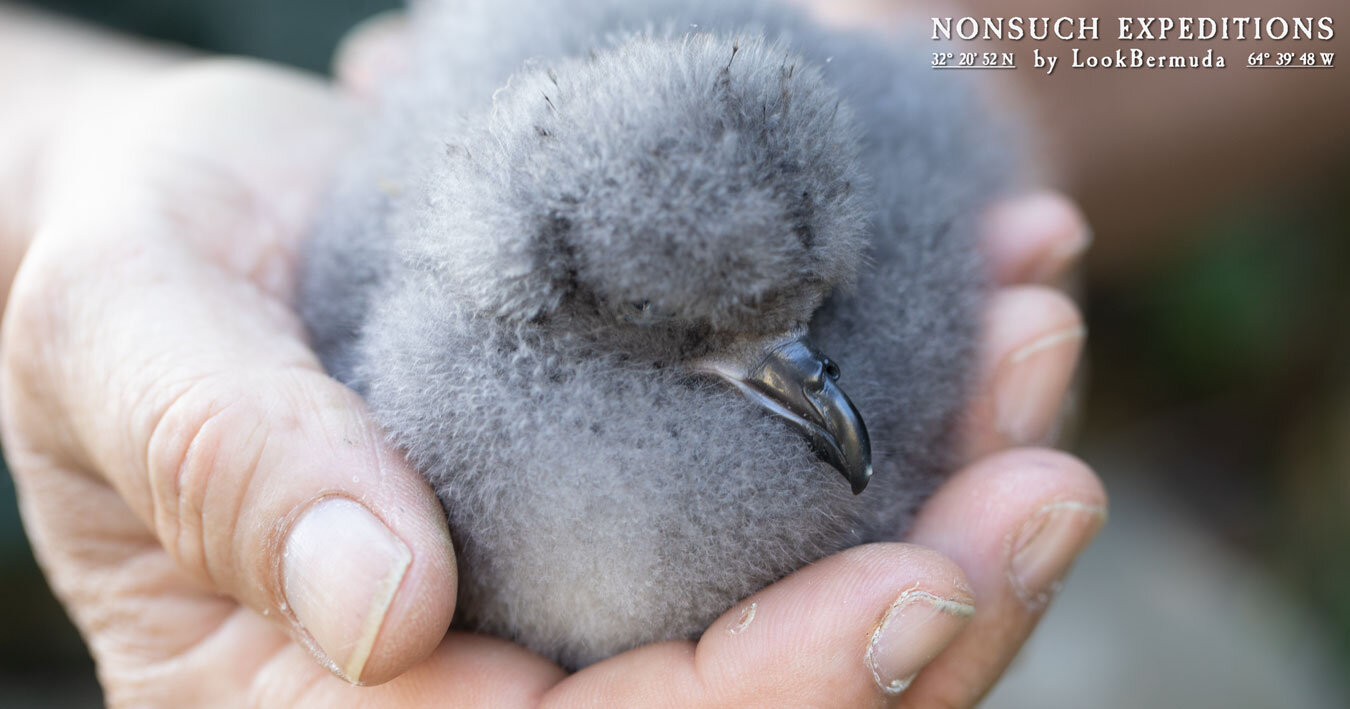All eyes are on CahowCam 2 with viewers around the world logged in to watch LIVE as if all goes well the chick is expected to hatch soon.
During the night of 8th-9th March, there began to be indications that the egg being incubated by the adult female Cahow (band no. E0172) in the CahowCam 2 nest (nest burrow no. R832) was beginning to hatch. The adult began to act "broody", looking under itself & checking the egg frequently, while partly spreading its wings, while a faint cheeping was occasionally heard...
This shows that the hatching process has probably begun, and a check of the laying date shows that the egg was laid about 51-52 days ago, so this is right about on schedule. The chick often starts peeping a few days before hatching begins, and the adult knows that hatching is imminent.
The chick will first go into " drawdown", then breaks through the inner membrane into the air cell inside the egg. This is called internal pipping. (Thanks to research associate Carla Marquardt for clarifying the hatching sequence). Using contractions of its neck muscles, the chick starts tapping its bill against the eggshell, with a small, horn-like structure on the end of the bill causing dimple-like punctures or cracks in the big end of the eggshell.
This is called "external pipping", and once the chick starts to breathe external air through these dimple cracks, this encourages it to make more. This goes on until there are enough of these cracks to weaken the shell so that the chick can push against and pop off the end of the eggshell. The adult keeps the egg/chick warm during this process, which can go on for as long as 8 to 48 hours!
After the wet, exhausted chick finally gets out of the eggshell, the adult preens it and then broods it, so that it can rest & dry out. When the chick emerges several hours later, it has magically transformed and looks much larger with its thick layer of down now fluffed out. The adult will often feed the chick within 5 hours with the last of its own food reserves.
After 1 to 3 days of brooding the newly hatched chick, the adult will leave it to return to sea to forage for squid, fish, and crustaceans to bring back and feed the chick. These feeding trips can last 3 to 5 days or more, covering up to several thousand miles. Both adults will devote the next 3 months to feeding the chick, often losing up to 40% of their own body weight in the process!
Elsewhere throughout the Colony, the 2021 Cahow nesting season is progressing well, with chick hatching proceeding somewhat ahead of schedule after an earlier than usual start.
Jeremy Madeiros | Lead Terrestrial Conservation Officer:
Following visits to the two eastern nesting islands on Friday 5th March, and two of the three western nesting islands on Saturday, 6th March, I can confirm that the number of hatched Cahow chicks now exceeds 40. A tenth Cahow chick was confirmed as having hatched on Nonsuch Island, with another egg in the process of hatching, and three more viable eggs still being incubated. Meanwhile, on Horn Rock, a total of 16 hatched chicks were confirmed on Saturday, with 9 more viable eggs still being incubated. The other chicks are spread out between three other nesting islands.
A good number of eggs are still being incubated by adult Cahows on all islands, and eggs can continue to hatch right up to the 18th to 21st of March, depending on how late they were laid. The first hatched chick was confirmed on the 23rd of February, one of the earlier hatchings on record. Weighing and growth measurements of hatched chicks have already been started, and I am happy to report that chicks are receiving regular feeding visits by adults, with some chicks measured today having increased from their 38 - 43 gram hatch weights to as much as 112 - 126 grams already.
We will keep everyone updated as more chicks continue to hatch; all the best, Jeremy





